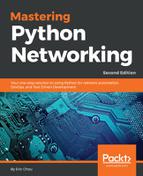Hosts are end nodes on the network that communicate to other nodes. In today's world, a host can be a traditional computer, or can be your smartphone, tablet, or TV. With the rise of the Internet of Things (IoT), the broad definition of a host can be expanded to include an IP camera, TV set-top boxes, and the ever-increasing type of sensors that we use in agriculture, farming, automobiles, and more. With the explosion of the number of hosts connected to the internet, all of them need to be addressed, routed, and managed. The demand for proper networking has never been greater.
Most of the time when we are on the internet, we make requests for services. This could be viewing a web page, sending or receiving emails, transferring files, and so on. These services are provided by servers. As the name implies, servers provide services to multiple nodes and generally have higher levels of hardware specification because of this. In a way, servers are special super-nodes on the network that provide additional capabilities to its peers. We will look at servers later on in the client-server model section.
If you think of servers and hosts as cities and towns, the network components are the roads and highways that connect them together. In fact, the term information superhighway comes to mind when describing the network components that transmit the ever increasing bits and bytes across the globe. In the OSI model that we will look at in a bit, these network components are layer one to three devices. They are layer two and three routers and switches that direct traffic, as well as layer one transports such as fiber optic cables, coaxial cables, twisted copper pairs, and some DWDM equipment, to name a few.
Collectively, hosts, servers, and network components make up the internet as we know it today.
